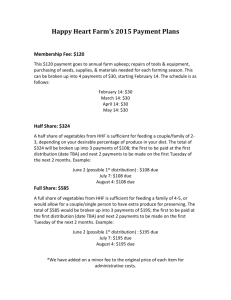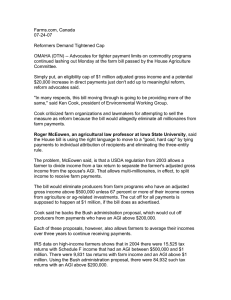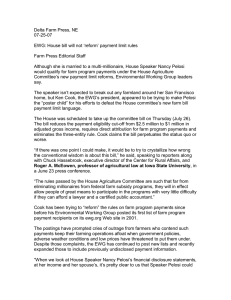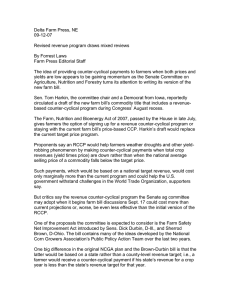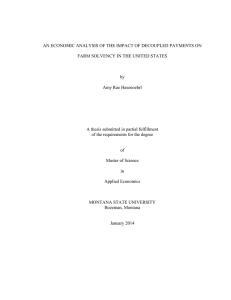Reuters 06-04-07 Direct payments are unneeded US farm aid-reformers
advertisement
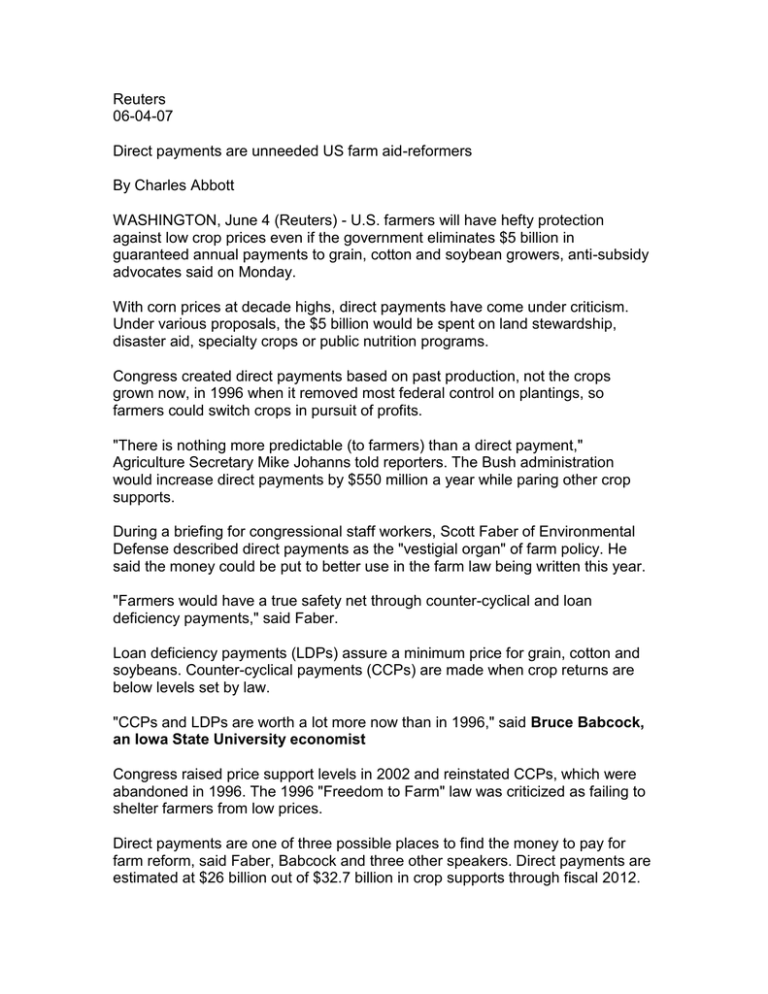
Reuters 06-04-07 Direct payments are unneeded US farm aid-reformers By Charles Abbott WASHINGTON, June 4 (Reuters) - U.S. farmers will have hefty protection against low crop prices even if the government eliminates $5 billion in guaranteed annual payments to grain, cotton and soybean growers, anti-subsidy advocates said on Monday. With corn prices at decade highs, direct payments have come under criticism. Under various proposals, the $5 billion would be spent on land stewardship, disaster aid, specialty crops or public nutrition programs. Congress created direct payments based on past production, not the crops grown now, in 1996 when it removed most federal control on plantings, so farmers could switch crops in pursuit of profits. "There is nothing more predictable (to farmers) than a direct payment," Agriculture Secretary Mike Johanns told reporters. The Bush administration would increase direct payments by $550 million a year while paring other crop supports. During a briefing for congressional staff workers, Scott Faber of Environmental Defense described direct payments as the "vestigial organ" of farm policy. He said the money could be put to better use in the farm law being written this year. "Farmers would have a true safety net through counter-cyclical and loan deficiency payments," said Faber. Loan deficiency payments (LDPs) assure a minimum price for grain, cotton and soybeans. Counter-cyclical payments (CCPs) are made when crop returns are below levels set by law. "CCPs and LDPs are worth a lot more now than in 1996," said Bruce Babcock, an Iowa State University economist Congress raised price support levels in 2002 and reinstated CCPs, which were abandoned in 1996. The 1996 "Freedom to Farm" law was criticized as failing to shelter farmers from low prices. Direct payments are one of three possible places to find the money to pay for farm reform, said Faber, Babcock and three other speakers. Direct payments are estimated at $26 billion out of $32.7 billion in crop supports through fiscal 2012. Crop insurance subsidies also are forecast at $26 billion in the same time period. The other possible money source is a $20 billion "reserve" created as part of Congress' spending blueprint. Jason Weller, an analyst for the House Budget Committee, said reserves have been used for two decades to facilitate legislation. The farm bill reserve can be used if there are corresponding cuts in spending or new revenues are found. The reserve "allows inter-jurisdictional transfer" of funds, said Weller, including programs outside Agriculture Committee jurisdiction. Committee leaders probably would have to agree in advance to that step, Weller said. During an impromptu session with reporters, Johanns said direct payments were far less likely to attract challenges under world trade rules than U.S. subsidies, such as price supports, that are linked to growing a particular crop.

